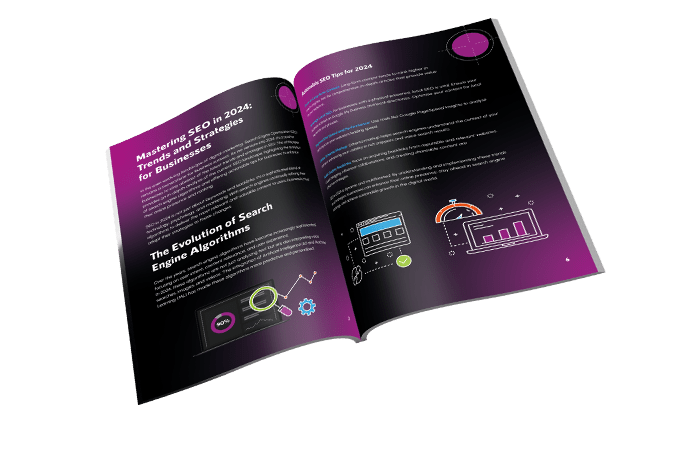News
Creating Impactful PPC Campaigns: Tips for Maximising ROI
Pay-per-click (PPC) advertising has emerged as a powerful tool for businesses aiming to drive traffic, generate leads, and maximise return on investment (ROI).
This article delves into practical advice for setting up and managing effective PPC campaigns, encompassing keyword research, ad copy optimisation, and budget management.
Understanding the Fundamentals of PPC
PPC advertising allows businesses to display ads on search engines and other platforms, paying a fee each time an ad is clicked. The most common PPC platform is Google Ads, which enables advertisers to bid on keywords relevant to their products or services.
Effective PPC campaigns are built on three pillars: thorough keyword research, compelling ad copy, and meticulous budget management.
Keyword Research: The Foundation of PPC Success
1. Identifying Relevant Keywords
Keyword research is the cornerstone of any successful PPC campaign. It involves identifying the terms and phrases that potential customers are likely to use when searching for products or services similar to yours. Tools such as Google Keyword Planner, Ahrefs, and SEMrush can provide insights into keyword volume, competition, and cost-per-click (CPC).
Tip: Focus on long-tail keywords, which are more specific and less competitive. For instance, instead of targeting the broad term “shoes,” consider “men’s running shoes UK” to attract more relevant traffic.
2. Analysing Competitor Keywords
Understanding what keywords your competitors are targeting can offer valuable insights. Tools like SpyFu and Moz can help you identify competitor keywords and assess their performance. By analysing competitor strategies, you can discover keyword opportunities that you might have missed and adjust your bids accordingly.
3. Grouping Keywords Effectively
Organising your keywords into tightly themed ad groups ensures that your ads are highly relevant to the search queries. This relevance boosts your Quality Score in Google Ads, which in turn lowers your CPC and improves your ad rank. Each ad group should focus on a specific product or service category, with tailored ad copy and landing pages.
Ad Copy Optimisation: Capturing Attention and Driving Clicks
1. Crafting Compelling Headlines
Your ad headline is the first thing potential customers will see, making it crucial to capture their attention immediately. Effective headlines are clear, concise, and convey a strong value proposition. Including the primary keyword in the headline can also improve ad relevance and click-through rate (CTR).
Tip: Use numbers or statistics in your headlines to make them more eye-catching. For example, “Save 20% on Men’s Running Shoes – Limited Time Offer.”
2. Writing Persuasive Ad Descriptions
The ad description provides additional details about your offer and should entice users to click through to your website. Highlighting unique selling points (USPs), benefits, and a clear call-to-action (CTA) can significantly enhance the effectiveness of your ad copy.
Tip: Test different CTAs to see which ones resonate best with your audience. Phrases like “Shop Now,” “Learn More,” or “Get a Free Quote” can drive higher engagement.
3. Utilising Ad Extensions
Ad extensions provide extra information and increase the visibility of your ads. They can include site links, call extensions, location extensions, and more. Using ad extensions can improve your ad’s CTR and overall performance.
Tip: Ensure that your ad extensions are relevant and up-to-date. For example, if you offer a seasonal promotion, include it in a promotion extension to attract more clicks.
Budget Management: Maximising ROI
1. Setting a Realistic Budget
Determining your PPC budget involves understanding your business goals and the competitive landscape. Start with a realistic budget that aligns with your marketing objectives and gradually increase it as you see positive results. Tools like Google’s Keyword Planner can help estimate costs based on your chosen keywords.
Tip: Monitor your spending regularly to ensure you’re staying within your budget. Adjust your bids and budgets based on the performance of your campaigns.
2. Implementing Bid Strategies
Google Ads offers various bidding strategies, such as manual CPC, target CPA (cost per acquisition), and ROAS (return on ad spend). Choosing the right bidding strategy depends on your campaign goals. For instance, if your goal is to maximise conversions, a target CPA strategy might be more effective.
Tip: Experiment with different bidding strategies to find the one that delivers the best results for your business. Continuously monitor and adjust your bids to optimise performance.
3. Tracking and Analysing Performance
Regularly reviewing your campaign performance is essential for identifying areas of improvement and maximising ROI. Google Ads provides a wealth of data, including impressions, clicks, conversions, and cost-per-conversion. Analysing this data can help you make informed decisions about where to allocate your budget.
Tip: Use tools like Google Analytics to gain deeper insights into user behaviour on your website. Tracking metrics such as bounce rate, average session duration, and conversion rate can provide valuable information about the effectiveness of your landing pages.
Advanced Strategies for Enhancing PPC Campaigns
1. Utilising Negative Keywords
Negative keywords prevent your ads from showing for irrelevant searches, saving you money and improving your campaign’s relevance. Regularly review your search term reports to identify and add negative keywords to your campaigns.
Tip: Consider using broad match modifier (BMM) to capture a wider range of relevant searches while still maintaining control over your ad spend.
2. Implementing Remarketing Campaigns
Remarketing allows you to target users who have previously visited your website but did not convert. By showing them tailored ads as they browse other websites or use social media, you can re-engage potential customers and encourage them to return to your site.
Tip: Create custom remarketing lists based on user behaviour, such as pages visited or actions taken on your site. This allows you to deliver more personalised and relevant ads.
3. A/B Testing Ad Variations
A/B testing involves creating multiple versions of your ads and comparing their performance to determine which one is more effective. Testing different headlines, descriptions, and CTAs can help you identify the best-performing ad copy.
Tip: Run A/B tests continuously to keep refining your ad copy. Even small improvements can have a significant impact on your campaign’s overall performance.
The Importance of Landing Page Optimisation
An effective PPC campaign doesn’t end with a click. Ensuring that your landing pages are optimised for conversions is crucial for maximising ROI. Here are some key considerations:
1. Ensuring Relevance
Your landing page should align with the ad copy and keyword that led the user there. Consistent messaging increases trust and encourages users to take the desired action.
Tip: Create dedicated landing pages for each ad group to ensure maximum relevance and conversion potential.
2. Simplifying Navigation
A cluttered or confusing landing page can deter users from converting. Keep your design clean and ensure that the most important information is easily accessible.
Tip: Use clear headings, bullet points, and concise text to convey your message effectively. A well-placed CTA button can guide users towards conversion.
3. Improving Load Times
Page load time is a critical factor in user experience and can significantly impact your conversion rates. Slow-loading pages can lead to high bounce rates and lost opportunities.
Tip: Use tools like Google PageSpeed Insights to identify areas for improvement and optimise your landing pages for faster load times.
Measuring Success: Key Metrics to Track
To gauge the success of your PPC campaigns, it’s essential to track key performance metrics. Here are some of the most important ones:
1. Click-Through Rate (CTR)
CTR measures the percentage of users who click on your ad after seeing it. A high CTR indicates that your ad is relevant and compelling to your audience.
Tip: Continuously optimise your ad copy and targeting to improve your CTR.
2. Conversion Rate
Conversion rate tracks the percentage of users who complete a desired action, such as making a purchase or filling out a form. A high conversion rate signifies that your landing page and offer are effective.
Tip: Conduct regular A/B tests on your landing pages to identify elements that improve conversion rates.
3. Cost Per Conversion
Cost per conversion calculates the average amount you spend to acquire a conversion. Keeping this cost low is crucial for maximising ROI.
Tip: Focus on high-performing keywords and ads, and allocate your budget accordingly to lower your cost per conversion.
Leveraging Automation and AI in PPC
With advancements in technology, automation and artificial intelligence (AI) are becoming integral to PPC campaign management. Here’s how you can leverage these tools:
1. Smart Bidding
Google Ads’ Smart Bidding uses machine learning to optimise your bids in real-time, based on the likelihood of a conversion. This can help you achieve your campaign goals more efficiently.
Tip: Monitor the performance of your smart bidding strategies and make adjustments as needed to ensure they align with your objectives.
2. Automated Rules
Automated rules allow you to set conditions that trigger specific actions in your campaigns, such as increasing bids for high-performing keywords or pausing underperforming ads.
Tip: Use automated rules to save time and ensure your campaigns are always optimised.
3. AI-Powered Ad Creation
AI tools can help generate ad copy based on your keywords and goals. These tools analyse vast amounts of data to create ads that are more likely to resonate with your audience.
Tip: Combine AI-generated ad copy with human creativity to craft compelling and effective ads.
Creating impactful PPC campaigns requires a strategic approach, combining thorough keyword research, compelling ad copy, and meticulous budget management. By leveraging advanced strategies such as remarketing, A/B testing, and automation, businesses can optimise their campaigns and maximise their ROI.
Remember, the digital landscape is constantly evolving, and staying ahead of the competition requires continuous monitoring and adaptation. Regularly review your campaign performance, test new strategies, and refine your approach to ensure long-term success.
By following these practical tips and staying informed about industry trends, you can create PPC campaigns that not only drive traffic and conversions but also deliver a significant return on your investment.





The Ultimate Social Media Guide
With the ever-growing power of social media, we use the latest techniques, video, and animation software to craft eye-catching social media assets that make your brand pop. Our designers, wielding Adobe Creative tools, create distinctive animations and graphics to illuminate your brand story and highlight your products or services. Want a unique design? No problem – we also offer bespoke designs to match your brand aesthetic.